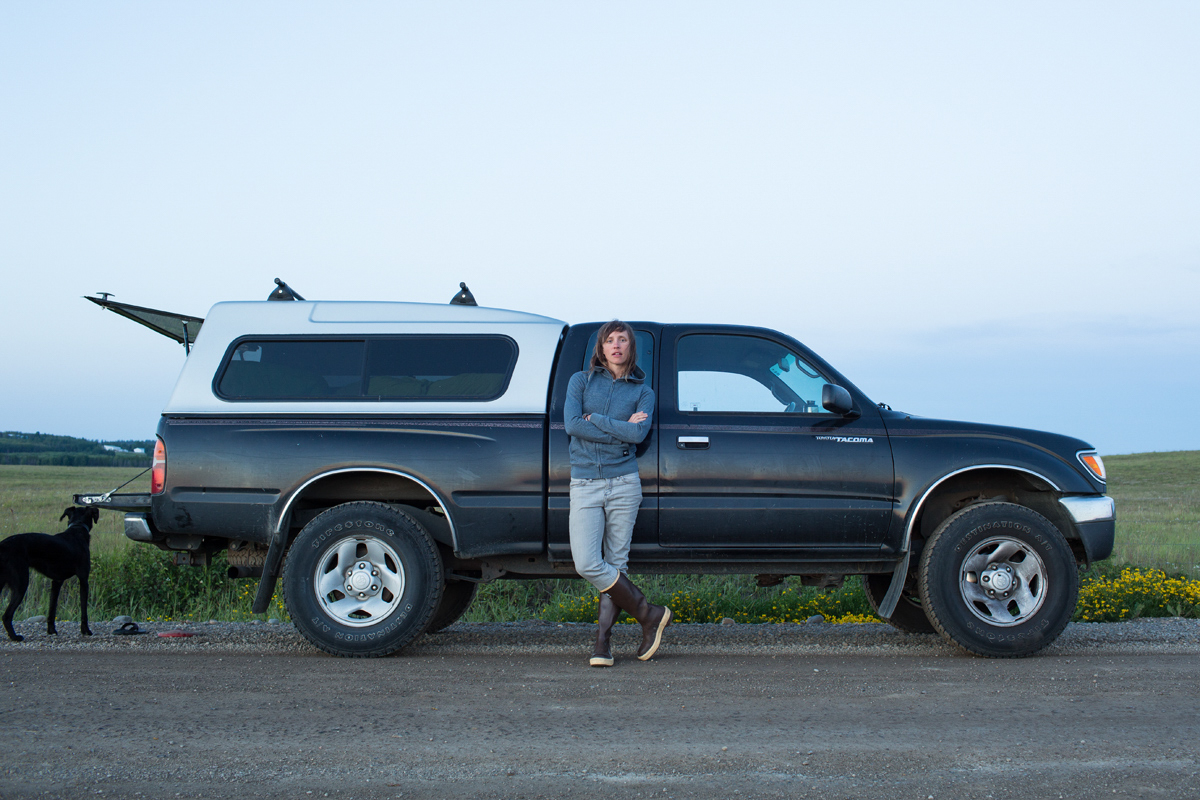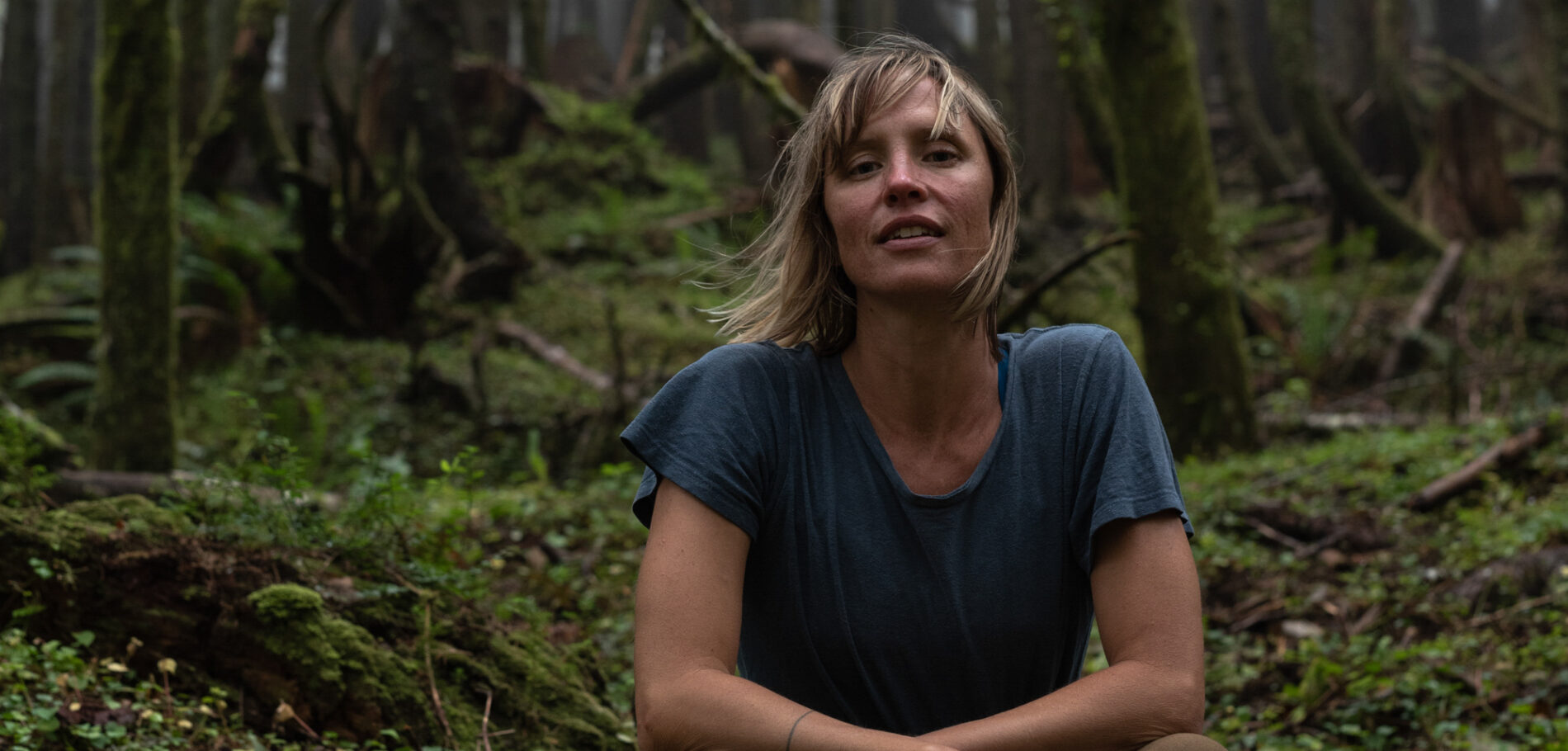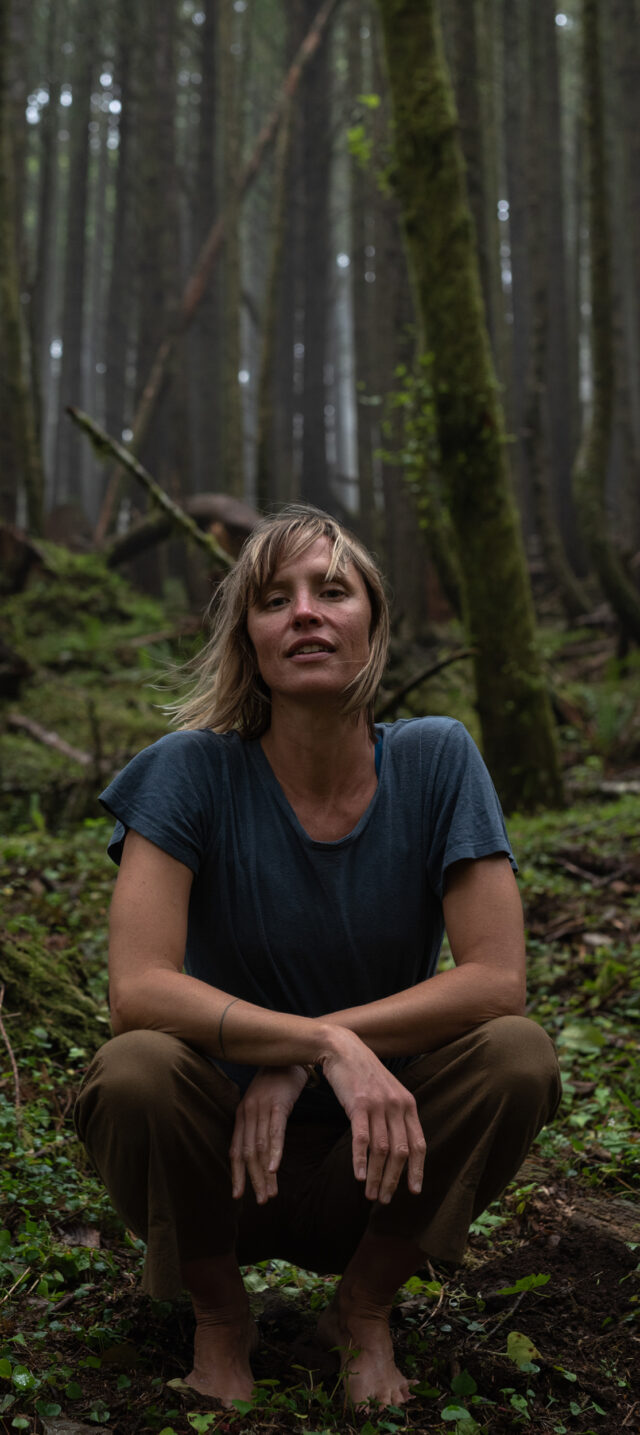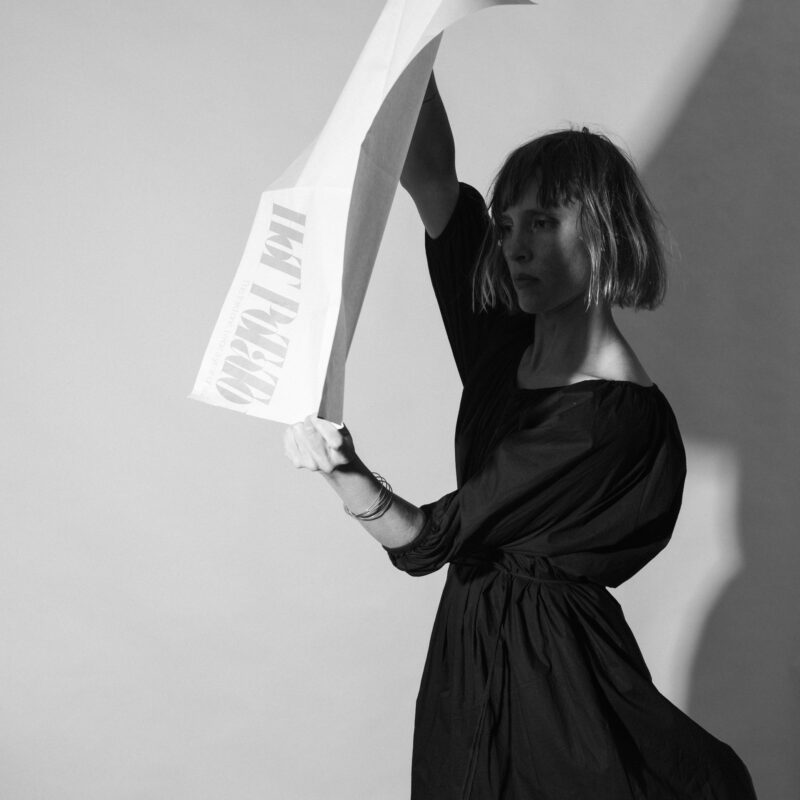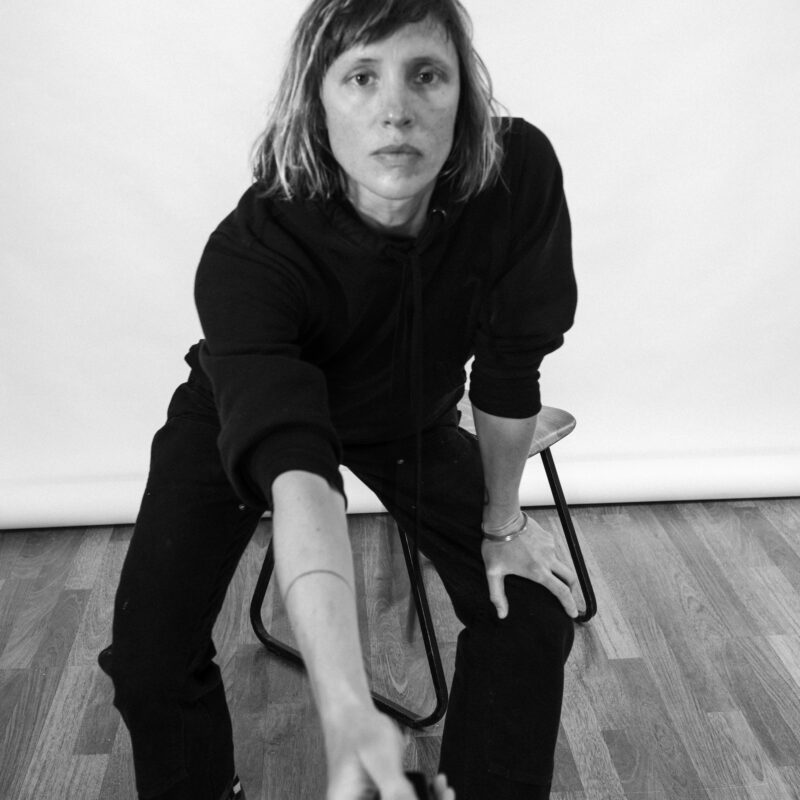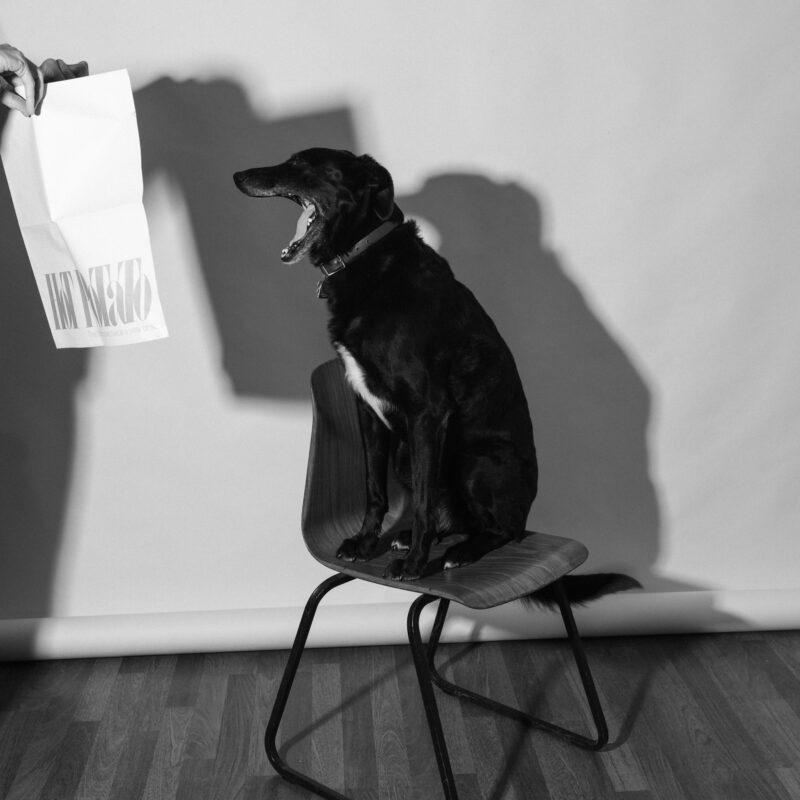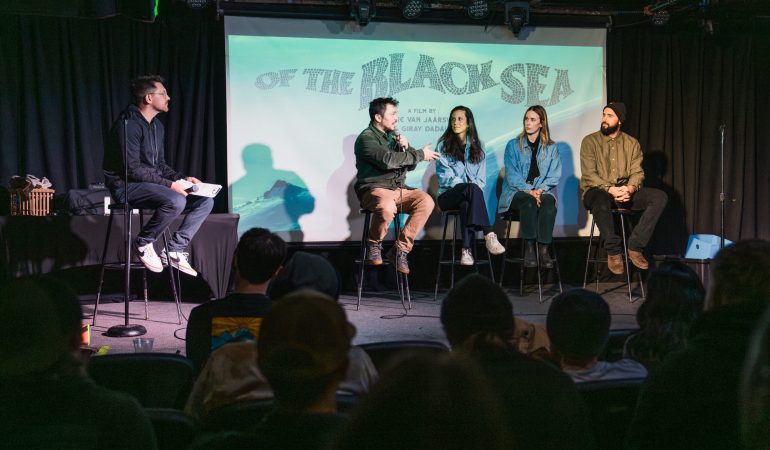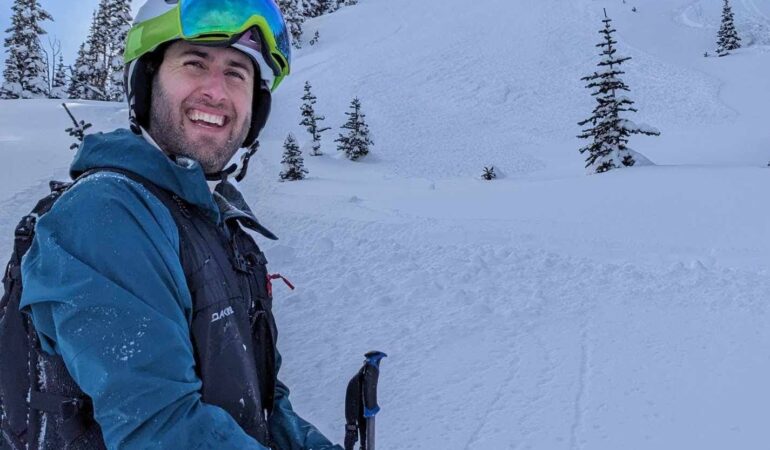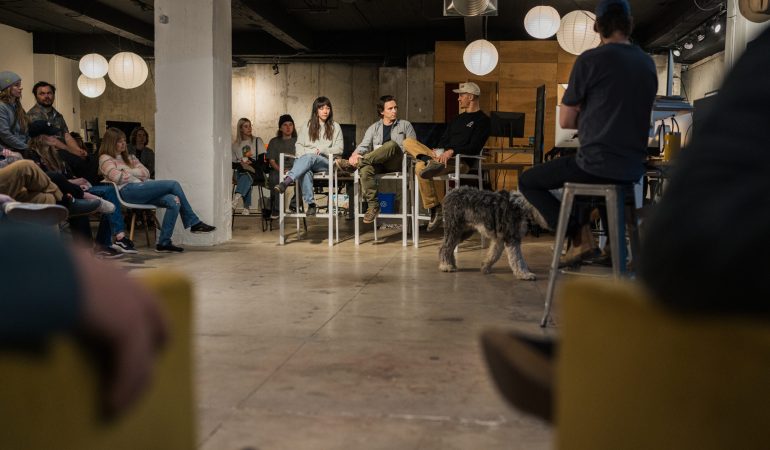Longer Reads: How to Pitch Arc’teryx—Interviewing Eugénie Frerichs
Since birth, the world has been trying to tear Eugénie Frerichs in half.
There’s her artistic side, which led her to an early career in modern dance and an MFA in Photography that focused on photobooks and gallery exhibitions. And there’s her love for being outside, which saw her staring out at snowcapped mountains through dance studio windows until she finally left the studio behind and moved to Telluride and Jackson to ski and run.
It was only after Eugénie learned to live with that internal rift that she found her way. That grounding led to the good fortunes of the outdoor industry, which found a passionate creative director who has contributed to the look and feel of Mountainfilm, Nau, Patagonia, Rivian, and most recently Arc’teryx, where she is the Creative Director of the Global Brand Studio.
We caught up with Eugénie to talk about blending passion with career and what Arc’teryx is looking for from creative partners with stories to tell.
Here’s Eugénie in her own words.
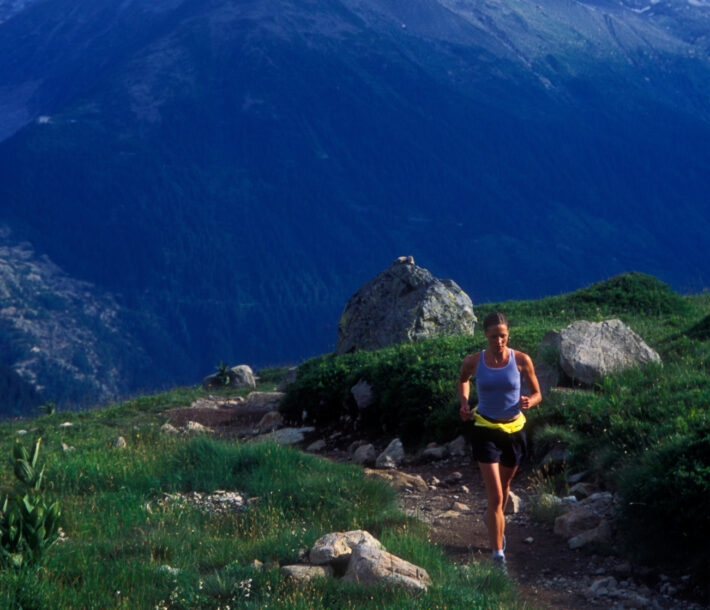

Let your curiosity guide you
In my early twenties, I moved to Telluride and scraped together random jobs, one of which was as the Tour Director for Mountainfilm. It was a great landing for me. Mountainfilm resonated with my artistic side. But I could also transfer all this energy as a dancer into mountain sports. I was over my head most of the time trying to keep up with mountain athletes.
Telluride and later Jackson exposed me to the outdoor industry. I became friends with outdoor photographers and filmmakers. At first I found myself in front of the camera when friends had a duffel full of samples and needed a runner or a (not very good) climber to shoot. But very quickly I realized I was much more comfortable behind the camera and found my happy place as a photo editor and art director.
In the mid-2000s I was still splitting my time between Jackson in the winter and working as a project manager for a performance art festival each summer in Portland. At that time in Portland, the apparel company Nau was just starting up. I met the creative director, Hal Arneson, who eventually became my mentor and one of my greatest teachers. When we met, he said, ‘You’re who we’re trying to reach. You understand the mountains. You get the creative process. And you understand the brand’s design aesthetic. Want a job?’ I had zero experience working in a creative studio. He took a leap, hired me, and changed the trajectory of my career.
With Hal’s guidance (he had been the Creative Director at Patagonia for a couple of decades), I helped set up the creative studio for the company, and migrated towards the projects that involved photography and visual storytelling. While there, I met outdoor photographers and athletes and learned how to do my job by setting up shoots, getting scrappy with small and nimble crews, wearing a hundred different hats, and making it up as I went along. I said yes to everything, took on tasks that I had no idea how to complete, and asked questions of anyone who was willing to share their knowledge. Fortunately, a lot of people shared.
Later I did a three-year stint as an Art Producer with Wieden + Kennedy, the global ad agency based in Portland. It was a master class in how to pull off global campaigns and ridiculous (in a good way) projects. I had a hybrid role where I researched and selected photographers and visual artists, but was also producing. The clients were global brands like Levi’s, Sony, Coca Cola. It was a crash course in how big budget, upper-echelon agencies work.
But ultimately it wasn’t for me. In my personal life I was starting to pursue photo projects that centered around small-scale regenerative agriculture, while at work the agency was taking on accounts that were pulling me in a direction I didn’t want to go. I left and, after a decade in the commercial creative space, went to graduate school to focus on my fine art photography practice. Somewhere along the way I linked up with Patagonia, which had published a handful of photos I’d taken while traveling in Chile, and they eventually asked me to step in as the director of the photo department, following in the footsteps of the legendary photo editor Jane Sievert. Fortunately, Jane kept her desk right next to mine and became for me another great mentor whose guidance I still rely on to this day.
Working at Patagonia was a dream job, but I’m a Pacific Northwesterner to the core, and living in southern California was starting to dry me up. I found my way back to the coastal temperate rainforests and now live on an island off the coast of northern Washington. Plenty of water here. In 2023 I linked up with Arc’teryx, and now work in a hybrid role where I can get to the Vancouver office when I need to, but spend most of my time working from home and escaping to the nearby hills. I have cities and art scenes close by when I need them (Vancouver, Seattle, Portland), though these days it seems I need the city fix a little less than I used to.
If there’s a theme to all of this, it’s that I’ve prioritized chasing after whatever I was curious about at the time, and learned to recognize the teachers who could provide wise guidance along the way. There were of course hiccups, there always are, but those can be good teachers too.



Try everything—at least once
In the commercial creative space, I have worked in pretty much every role except for graphic design. Producer, talent, photo editor, photographer, writer, strategist, art director, and creative director. I guess I like to know how things get made. Having had such varied experience makes it a little easier for me to work with our internal teams and also the creatives we contract with. It’s been a life-long exercise in creative empathy.
My career has taught me that what you might think of as a narrow skill—editing, photography, writing, film—is actually quite broad. The skills cross over. Everyone is constructing sentences, in a way, just using different mediums to put the pieces together.
With photo editing, you start to develop an eye for a good photo. And then you learn how to sequence images. That requires getting really indulgent about seeing and looking critically and finding stories in individual shots, first, and then a series of images strung together. With the onslaught of endless digital images (not to mention AI, oof), understanding the implications of image making and sequencing feels especially important. What are we really saying by putting this series of images together? It’s good to zoom out.
Film can be similar. The difference of course is in the way everything moves and how it all comes together in post, layered with sound, music, visual effects. But the considerations, and the way you get into and examine the work, are similar. It’s a series of images strung together. What are we really saying by this series of creative choices we’ve just made? How will this work be received by the viewer without us standing next to them explaining how we got here?
Feedback is an art form
Something I really love about creative direction is the opportunity to have long conversations with creatives where I learn where they’re trying to go with a project, and I try to help them with getting there.
Whatever the medium, it’s easy for creatives to get into the weeds. They work with so much heart. My job is to stay out of the weeds to look at the work objectively. How can I help you see this from a different angle?
Each time, I have to pass through an empathy portal. Then I need to lead with questions, rather than criticism. How did you get here? Where are you trying to go? What’s making you feel stuck? What do you like about this work? What feels off? Giving feedback is an art form, and a practice I am constantly working to refine. I want the feedback to feel activating rather than deflating.
Creatives also have to learn how to stay clear-eyed and strong even when the feedback we receive is hard to hear. I include myself, and creative leaders in general, in this assessment. Over time we can develop the muscle that lets us discern between feedback we can ignore and feedback we should absorb. Not all feedback needs to be actioned.
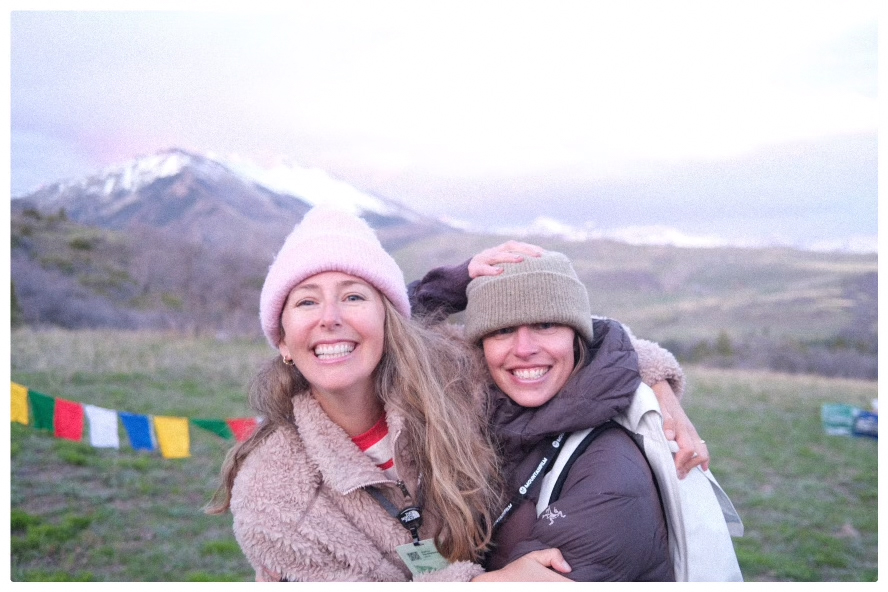
Here are a few thoughts on working with Arc’teryx, specifically:
Reach out earlier than you think you should
“At Arc’teryx, our planning cycle can be up to two years out. We center our seasons around narrative themes and specific facets of our three sport categories, Climb, Snow, and Trail. There’s a lot of planning involved and it’s much easier to integrate your idea if you come to us early in your process.”
Do your research—we can tell when you don’t
“Before reaching out, take the time to explore the Arc’teryx universe and get up to speed on what we’re publishing and whether we might be a good fit for you, stylistically. A tailored pitch that shows signs of an understanding of our brand’s general aesthetic will pique our interest more than a deck that feels like it’s been frequently recycled and sent to multiple brands.”
Lead with questions
“If this is the first time we’re meeting you, let’s start the conversation with curiosity, not a pitch. Who are you and what kind of work excites you? Who is Arc’teryx and what are we thinking about right now? What do we need? The best collaborations for us start with ideas that aren’t already fully baked, by the artist or our creative team. It’s more fun to build the work together.”
Know your creative boundaries
“Compromise is inevitable when working with a brand—for the artist as well as the company. If you’re pitching your magnum opus, and you know you won’t be willing to bend on the story, a brand might not be the best funding partner. Take the time to talk through the dealbreakers before the contracts are signed. Proactive communication sets a healthy tone for working together.”
Make new friends
“The fact that you can hire your friends to help you on your shoots is, for the outdoor industry, both a blessing and a curse. Blessing: With your friends, you might nail it. Curse: When you always hire the same people, you start to swirl in a bit of an echo chamber and the industry doesn’t evolve. We like to work with folks who do their part to expand the community, and who are generous with their knowledge. At Arc’teryx, we’re always excited to meet new contributors who might be just getting started. We want to help with demystifying the industry.”
Kindness goes a long way
“Sounds trite, but I really believe it. We like working with folks who are gracious with their crew, who make the athletes laugh and feel safe while they’re working together in the mountains, and who say thank you to everyone involved in bringing the work to life.”
